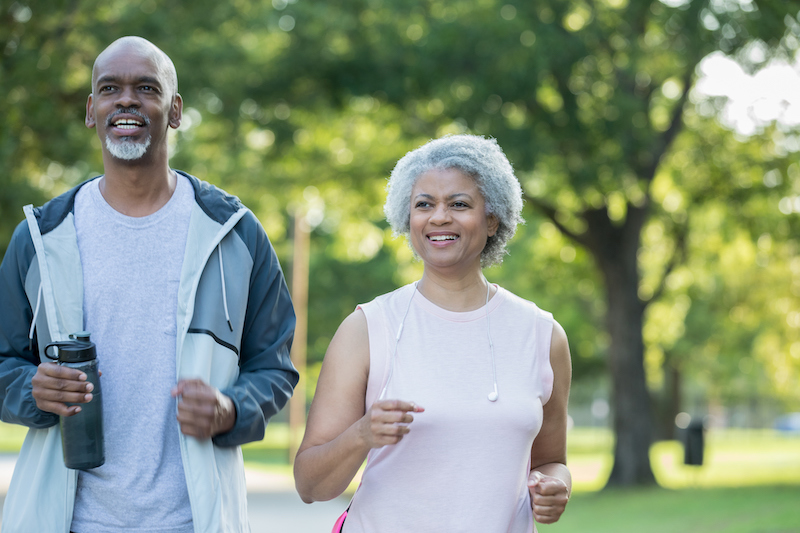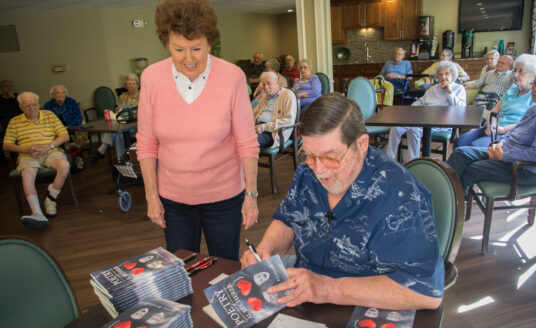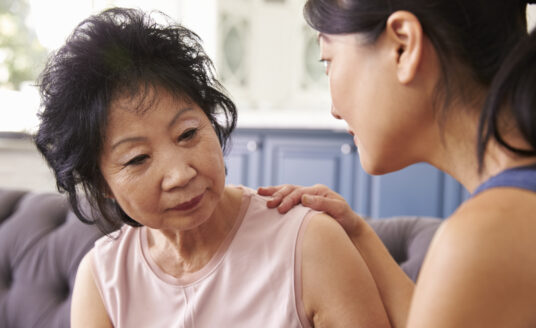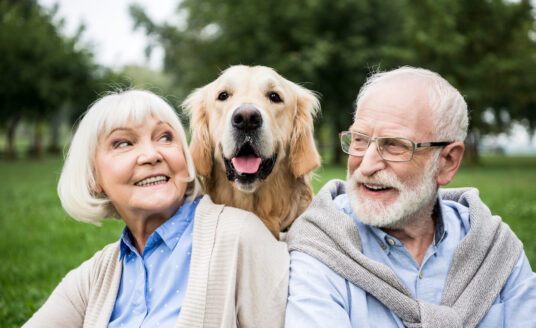Newton’s First Law of Motion states that a body in motion tends to stay in motion. For example, a bowling ball will continue to roll after it has left the bowler’s hand.
That same law states that due to inertia, a body at rest tends to stay at rest. In other words, if the same bowling ball is set down, it won’t move unless some type of force (even a simple touch) is applied to it.
How does this apply to human beings? People are meant to stay in motion. When we stop moving, we not only lose physical function, but we can develop “mental inertia” — the belief that movement isn’t worth the effort.
It is generally accepted that seniors have more to gain from movement and exercise than any other age group. Consistent low-impact exercises for seniors have been beneficial for people living with the following conditions:
- Arthritis
- Heart disease
- Type 2 diabetes
- Obesity
- Cancer
- High blood pressure
- Depression
- Dementia
- Insomnia
NOTE: Before beginning any exercise program, you should consult with your physician.
Back Exercises
Superman
The superman exercise strengthens the entire upper and lower back. Lie on your stomach on a flat surface and raise both arms and legs at the same time, as though flying like Superman. Hold for five seconds, then return to the starting position.
Hip bridge
This exercise is for the back and core. Begin by lying on your back, with your arms to the side, knees bent and feet flat on the floor. Tighten your stomach and butt muscles, then lift your pelvis so your body is in a straight line from shoulders to knees. Hold for a few seconds, then slowly return to the starting position.
Knee to Chest Stretch
This exercise stretches out your lower back as well as the front of your hips and inner thighs.
Lie on your back. Lift one leg, bring one knee up to your chest and hold. Release and repeat with your other knee.
Knee Exercises
Exercises that strengthen the muscles around your knee can help with knee pain.
Straight Leg Raises
This exercise strengthens your quadriceps (the front muscles in the thigh).
Lie on your back. One leg should be straight, and the other leg should be bent with the foot flat on the floor. Tighten the muscles of the straight leg and raise it off of the floor. Hold, then return to the starting position. Switch sides and repeat.
Half Squats
If performed correctly, squats can be good for strengthening sore, arthritic knees.
Stand with your feet shoulder distance apart, hands out in front of you. Lower your hips about 10 inches (not a full squat), hold for a few seconds, then stand back up. As your leg strength improves, you can increase the number of sets you complete, or add hand weights to increase resistance. If balance is an issue, you can perform the squats while supporting yourself with a sturdy chair.
Shoulder Exercises
Wear and tear can take a toll on the shoulders, and can even make it difficult for a person to turn and look behind themselves.
Shoulder Blade Squeeze
To perform a shoulder blade squeeze, stand straight and tall. Pull shoulder blades down and back to bring the elbows back and inward. Return to the starting position and repeat.
Full-Body Exercises
Plank
Some exercises involve multiple areas of the body. The plank is one of them. It strengthens the back and core, as well as the shoulders. Lie on your stomach with elbows bent on the floor. Tighten abdominal muscles and lift hips and knees off the floor. Hold for a few seconds, then return to the starting position. A less strenuous version would be to perform the movement with your knees remaining on the floor.
Other Low-Impact Exercises for Seniors
Tai Chi and Yoga
Tai Chi is a slow, gentle workout of movements, while yoga is most commonly associated with a series of physical postures. According to Harvard Health, both provide a long list of health benefits that improve flexibility, strength, mobility, mood, quality of life, range of motion, reflexes, and thinking skills. Benefits also include a reduction in both pain and susceptibility to falls.
Indoor Cycling or Elliptical Machine
These are good year-round exercises that are not weather dependent. They provide cardiovascular benefits along with calorie burn. Because these exercises take pressure off of your feet, they limit joint stress.
Water Aerobics and Swimming
Water aerobics and swimming are excellent, full-body activities that provide strength and cardiovascular benefits. Moving in water supports the joints, and provides muscle resistance. These activities are often recommended for seniors recovering from a fall.
Walking
All you need for walking is a good pair of shoes and a sidewalk, street, park, path or shopping mall. As a weight-bearing exercise, it requires the body to work against gravity, but the lessened impact of walking as compared to jogging means joints are not overly stressed. Walking at a good pace (everyone’s is different) can help with weight management, cardiovascular health, and getting a good night’s sleep. It is also shown to improve brain health. Plus, walking with friends is a great chance to socialize. Even the family dog can benefit from a walk!



